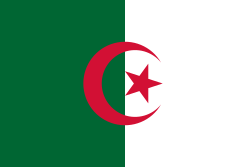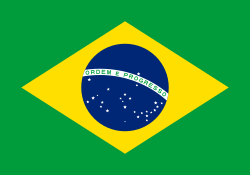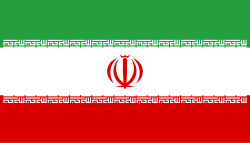Rymddräkt


En rymddräkt är en anordning som är avsedd att omsluta en människa eller ett djur under en rymdresa.
Funktionskrav
DET finns flera krav på specifika funktioner som måste uppfyllas för att fungera som en rymddräkt:
- Stabilt innertryck. Detta tryck kan mycket väl vara lägre än lufttrycket vid havsnivå på jorden, eftersom luftblandningen normalt innehåller mer syre och mindre koldioxid än jordens blandning.
- Andningsbart syre. En rymddräkt innehåller ofta ett koldioxidfilter (ofta litiumhydroxid), vilket minimerar kravet på tillförsel av ny syrgas.
- Temperaturkontroll. Värme kan i rymden bara förloras genom strålning eller strömning (när astronauten vidrör andra objekt). Eftersom värme inte kan avledas effektivt används ett system med vätskekylda underdräkter.
- Skydd mot elektromagnetisk strålning.
- Skydd mot partikelstrålning.
- Skydd mot mikrometeoriter.
- Rörlighet (innefattar även möjligheter att manövrera, docka med, och fastgöra vid rymdfarkost via lina)
- Kommunikationsmöjligheter.
- Underhåll (såsom påfyllnad och avtappning av vätskor och gaser).
Målet med en rymddräkt är att bäraren ska kunna röra sig så obehindrat som möjligt. Nyckeln till rörelsefrihet är att bibehålla en kostant volym. När till exempel en led i rymddräkten böjs, orsakar det en volymändring som kräver att ett arbete utförs. Bäraren måste dessutom använda kraft för att hålla leden böjd. Även om dessa krafter är små, kan de i längden vara mycket uttröttande. Arbetet förhåller sig till volymförändringen som
där är startvolymen, är slutvolymen och är dräktens tryck. Eftersom trycket måste hållas inom ett tämligen smalt område lämnar det volymförändringen som en påverkbar variabel. Det är problemet med volymförändring som alla rymddräktsdesigner försöker minimera eller eliminera.
Den vanligaste lösningen ligger i att använda flera lager. Det innersta funktionella lagret består av den så kallade blåsan. Detta är ett lager som består av gummi och är således böjligt. För att undvika okontrollerad expansion av detta lager används ett yttre lager för att kontrollera denna expansion. Gummilagret är större än det yttre lagret och det överflödiga gummit samlas runt lederna. När bäraren böjer till exempel ett knä minskar volymen bakom knät medan volymen framför knät ökar. På så sätt hålls dräktvolymen konstant.
Det yttersta lagret erbjuder skydd mot extrema temperaturer såväl som mot mikrometeoriter och strålning.
Rymddräkt EMU

Rymddräkten EMU som till exempel Christer Fuglesang hade under sina rymdpromenader vid STS-116-missionen vägde 140 kilo med all utrustning. Dräkten är vit för att reflektera värme och för att synas bra. EMU skyddar mot vakuum och strålning i rymden och har ett avancerat underställ med vattenslangar reglerande kroppstemperaturen. Hjälmen skyddar mot ljus och värme och innehåller strålkastare och kameror. På ryggsäcken sitter små raketer som kan användas i nödläge.
Externa länkar
 Wikimedia Commons har media som rör Rymddräkt.
Wikimedia Commons har media som rör Rymddräkt.- A Field Guide to American Spacecraft: A list compiled by Lee Sledge and James H. Gerard of American space suits and the museum locations where they are displayed.
- Astronautix.com complete list of Space Suits
- Russian Space Suits
- Design of Soviet/Russian Space Suits
- NASA JSC Oral History Project: See link near page end to Walking to Olympus: An EVA Chronology.
- NASDA Online Space Notes
- Analysis of the Space Shuttle Extravehicular Mobility Unit – 1986
- NASA Space Shuttle EVA tools and equipment reference book – 1993
- Space Suit Evolution From Custom Tailored to Off-the-Rack
- Engineering Aspects of Apollo: Section on the Apollo space suit and portable life support system.
- Historic Spacecraft – Spacesuits
- Nasa Image Gallery
- Zvezda History (Russian) Eng
- ILCDover.com – Spacesuits
- Smithsonian Air and Space: Space suits past and future
- In April 2011, the VOA Special English service of the Voice of America broadcast a 15-minute program on the evolution of space suits. A transcript and MP3 of the program, intended for English learners, can be found at The Evolution of Spacesuits.
Media som används på denna webbplats
Kanadas flagga, införd 1965; denna version med Pantone‐nyanser. Nuvarande utformning ersatte den tidigare kanadensiska Red Ensign.
The Flag of Europe is the flag and emblem of the European Union (EU) and Council of Europe (CoE). It consists of a circle of 12 golden (yellow) stars on a blue background. It was created in 1955 by the CoE and adopted by the EU, then the European Communities, in the 1980s.
The CoE and EU are distinct in membership and nature. The CoE is a 47-member international organisation dealing with human rights and rule of law, while the EU is a quasi-federal union of 27 states focused on economic integration and political cooperation. Today, the flag is mostly associated with the latter.
It was the intention of the CoE that the flag should come to represent Europe as a whole, and since its adoption the membership of the CoE covers nearly the entire continent. This is why the EU adopted the same flag. The flag has been used to represent Europe in sporting events and as a pro-democracy banner outside the Union.bendera Indonesia
Flag of Iran. The tricolor flag was introduced in 1906, but after the Islamic Revolution of 1979 the Arabic words 'Allahu akbar' ('God is great'), written in the Kufic script of the Qur'an and repeated 22 times, were added to the red and green strips where they border the white central strip and in the middle is the emblem of Iran (which is a stylized Persian alphabet of the Arabic word Allah ("God")).
The official ISIRI standard (translation at FotW) gives two slightly different methods of construction for the flag: a compass-and-straightedge construction used for File:Flag of Iran (official).svg, and a "simplified" construction sheet with rational numbers used for this file.
Flag of Israel. Shows a Magen David (“Shield of David”) between two stripes. The Shield of David is a traditional Jewish symbol. The stripes symbolize a Jewish prayer shawl (tallit).
MAVEN at Mars, Artist's Concept. This artist's concept depicts NASA's Mars Atmosphere and Volatile EvolutioN (MAVEN) spacecraft near Mars. MAVEN is in development for launch in 2013 and will be the first mission devoted to understanding the Martian upper atmosphere. The mission's principal investigator is Bruce Jakosky from the Laboratory for Atmospheric and Space Physics at the University of Colorado.
The goal of MAVEN is to determine the role that loss of atmospheric gas to space played in changing the Martian climate through time. MAVEN will determine how much of the Martian atmosphere has been lost over time by measuring the current rate of escape to space and gathering enough information about the relevant processes to allow extrapolation backward in time.
NASA Goddard Space Flight Center in Greenbelt, Md. manages the project and will also build some of the instruments for the mission. In addition to the principal investigator coming from CU-LASP, the university will provide science operations, build instruments, and lead education/public outreach. Lockheed Martin of Littleton, Colo., is building the spacecraft and will perform mission operations. The University of California-Berkeley Space Sciences Laboratory is also building instruments for the mission. NASA's Jet Propulsion Laboratory, Pasadena, Calif., will provide navigation support, the Deep Space Network, and the Electra telecommunications relay hardware and operations.
For more information about MAVEN, visit www.nasa.gov/maven.Författare/Upphovsman: Askeuhd, Licens: CC BY-SA 4.0
STS057-89-67 - Against the blackness of space, Mission Specialist Peter J.K. Wisoff, wearing an extravehicular mobility unit, stands on a Portable Foot Restraint (PFR), Manipulator Foot Restraint (MFR) attached to the End Effector of the Remote Manipulator System (RMS), colloquially known as the "robot arm". Wisoff is being maneuvered above the payload bay of Endeavour as part of Detailed Test Objective (DTO) extravehicular activity procedures. DTO results will assist in refining several procedures being developed to service the Hubble Space Telescope on mission STS-61 in December 1993. The Earth's surface and the Endeavour payload bay are reflected in Wisoff's helmet visor.
Författare/Upphovsman: en:User:Jawed, Licens: CC BY-SA 3.0
The space suit used by David Scott on the lunar surface during the Apollo 15 mission. Image was taken by Jawed Karim (en:User:Jawed ?) on May 22nd 2004 at the Smithsonian Museum in Washington DC. This image is composed of 7 individual images taken at close range and later stitched together.
Astronaut John H. Glenn Jr. dons his silver Mercury pressure suit in preparation for launch of Mercury Atlas 6 (MA-6) rocket.



























